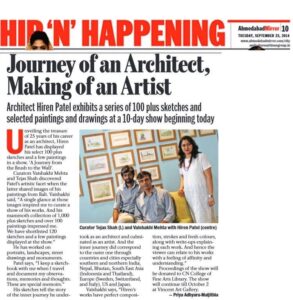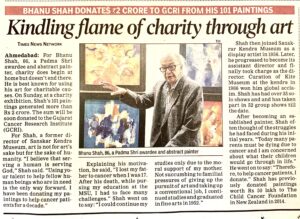Gujarat University Takes A Step Forward, Launches Course In Garba
Want to learn what are teen taali, taali chapti, popatiyu, dhodiyu and finally sanedo style? Then fleeting interest of nine nights is not enough. If you want to study the nuances of everexpanding style sheet of garba — a form enriched with both latest and centuries-old social, cultural and historical influences — you have a chance to explore this folk dance form academically at Gujarat University.
To preserve this popular folk dance form, scholars associated with Gujarat University, which just launched its master’s programme in performing arts, is all set to launch a three-month certificate course from the academic year of 2012. The course will offer dance enthusiasts a chance to study garba as an art form.
Viraj Amar, chief coordinator and director of the master’s course in performing arts at GU, said the department plans to launch a series of certificate courses on garba, folk dances, folk music and s u g a m s a n g e e t . Amar added, “The department plans to teach it academically to retain and perpetuate its glory in its original form.”
Historically, the origins of garba, then known as garbo, can be tracked 5,000 years back to the times of Lord Krishna. While Krishna is said to have initiated the dandiya-raas tradition, his granddaughter-in-law Usha is credited with starting the laasya nritya tradition which is today known as garba, say scholars.
Utpala Desai, doing a doctorate on tribal performing arts at Gujarat University’s Indian Culture department, said, “Garbo is state’s oldest folk dance form, origins of which are linked to times of Krishna and since then form is perpetuated by oral tradition. It is flexible form which originated on temples grounds as a prayer to Goddess Jagdamba and later got transferred to sheris. Then it was elevated on the stage from where again due to soaring popularity it went to local party plots and clubs and in turn later it also encompassed expatriates and made them dance on its tunes across the globe. This form has evolved in manner that has been able to attract the minds and hearts of commoners, artists, scholars and devotees and is appealing to people of all age group. The attempt to scholastically and academically elevate and preserve the form by GU is a welcome move.”
To understand Garba theoretically, the word Garba comes from the Sanskrit word for gestation or pregnancy. Traditionally, the dance is performed around a clay lantern with a light inside, called a ‘Garbha Deep’. Garba symbolically is performed in a circle as time in Hinduism is cyclical – the cycle of time revolves, from birth, to life, to death and again to rebirth.
Know your garba
The word garba comes from the Sanskrit word for gestation or pregnancy – ‘garbha’ Traditionally, the dance is performed around a clay lantern with a light inside, called a ‘garbha deep’. Garba symbolically is performed in a circle — representing the cycle of time. Traditionally, garba is said to have originated in Ahmedabad and Vadodara where women danced carrying a row of colourful earthen pots.

